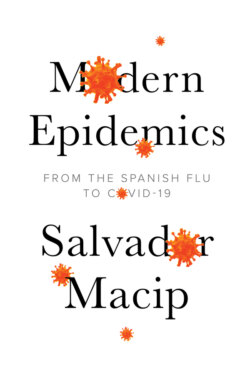Читать книгу Modern Epidemics - Salvador Macip - Страница 17
Secondary effects
ОглавлениеIt’s been known for some time now that antibiotics can disrupt the balance of ‘good’ bacteria. Medicines eliminate infections but are unable to distinguish between aggressive and innocuous microbes. Depending on the treatment, even weeks can go by in some cases before the bacterial composition of the intestine, for example, completely recovers. This can then give rise to diarrhoea or new infections caused by other harmful bacteria, especially in people already weakened by illness.
This shows that it is not only our intestines that are full of microorganisms. Our mouths, too, normally have between six and thirty different types of bacteria. And skin is another organ that is home to thousands more. It was once believed that most of them were of the genus Staphylococcus, because when samples taken from human skin were cultivated in the laboratory, they were the most visible. But this doesn’t mean that there aren’t many more. There are others that don’t divide so quickly. Indeed, with the new tools of genetic analysis, it’s been possible to see that the set of denizens of human skin is much more complex than was previously thought, with up to 1,000 different species, which is to say, a number that’s comparable with that for the intestines. The skin behind the ear is the zone with the least diversity of bacteria, with only fifteen kinds, while the forearm has as many as forty-four. This varying distribution might explain whysome skin diseases appear in certain zones and not in others. As in the intestines, bacteria on the skin have important functions, so, for example, oilier zones have some bacteria that produce a moisturizing substance to stop the skin from cracking.
In recent years, several studies have set about the task of identifying all the microorganisms that are to be found in different organs, generally using modern techniques to read their genes in order to relate them to obesity or illness. These studies give us a general idea of the microbes we carry around with us, although each person’s flora is, in fact, unique. Almost like our DNA. It depends more on the zone in which we live than on our genes, and personal habits have a considerable influence as well. An article published in January 2009 demonstrated that sets of intestinal bacteria vary even between twins. Nevertheless, the members of a family living under the same roof have similar flora. The article also indicated that obesity reduces the diversity of flora, as well as altering the genes and metabolism of microorganisms. It’s speculated that this might have consequences for our health, but we still aren’t sure what they might be.
This knowledge we are acquiring about the microbes that coexist with us has led to questions about whether they can be used for therapeutic purposes. There are now studies looking into ways of changing the composition of a person’s microbiota as a way of curing illnesses and even regulating the metabolism with the aim of weight loss. The easiest way is to take microbes from a healthy person’s faeces and transfer them to the patient. Informally known as a stool transplant, this isn’t such a simple process as it may appear, because it requires, first of all, filtering out the bad microbes and other contaminants.
It’s still not known whether this procedure might have any real benefit, but what is undeniable is that the microbiota plays an important role in our health, both positively and negatively. This could be more far-reaching than initially imagined. Some studies have even shown that the microbes inhabiting our intestines could affect the brain and somehow influence behaviour.
